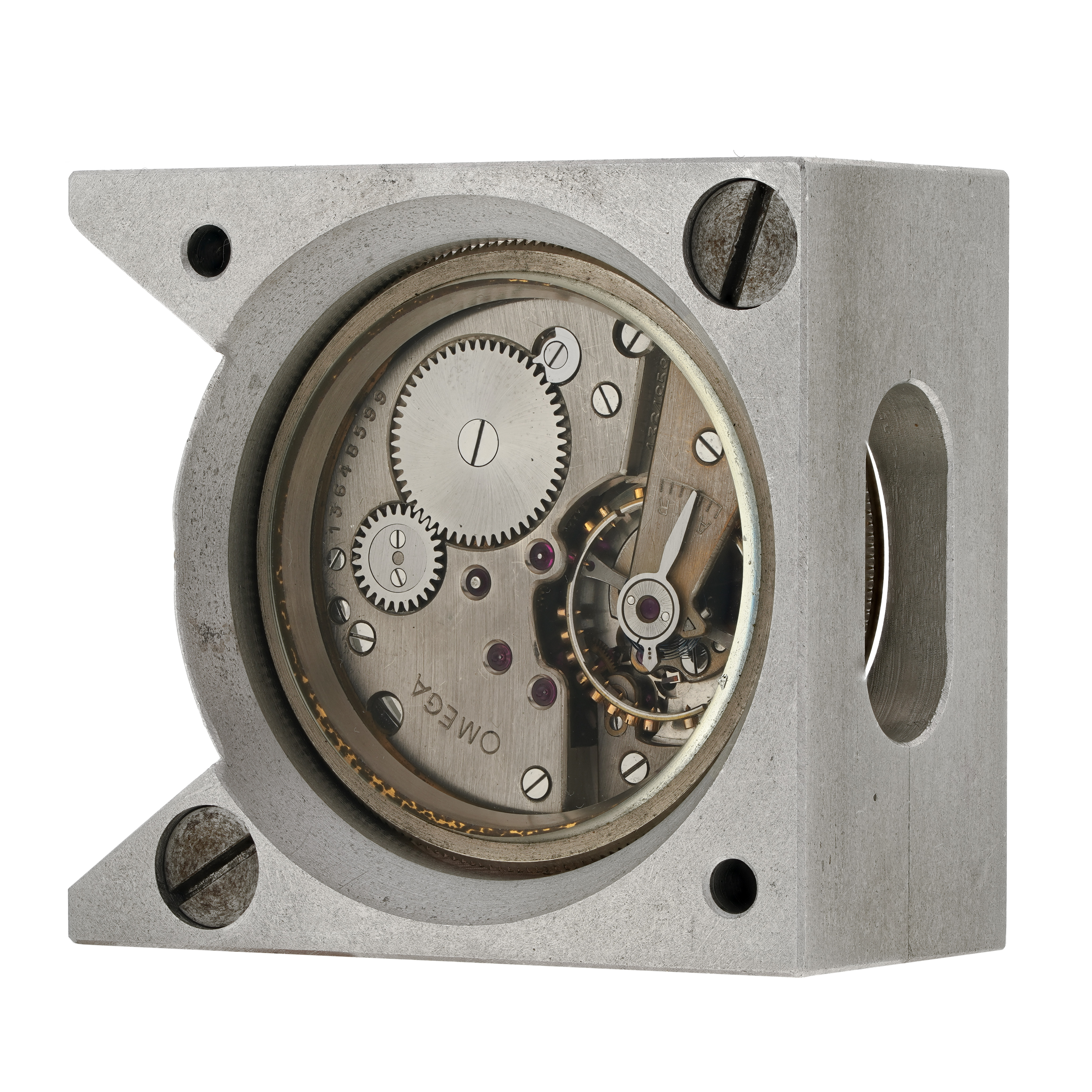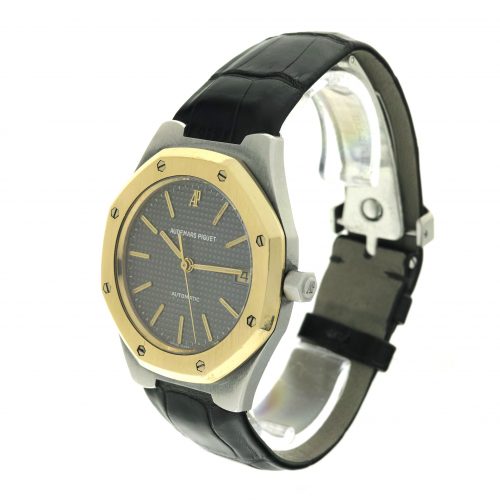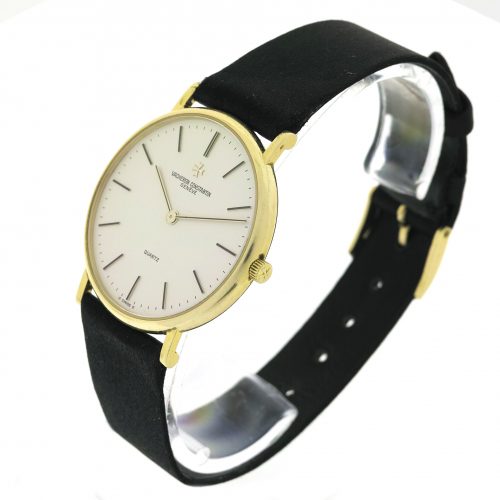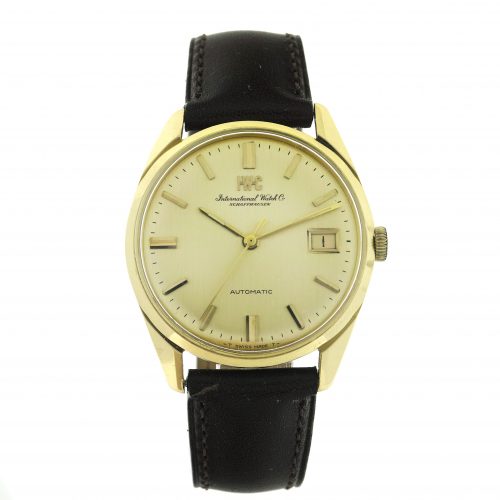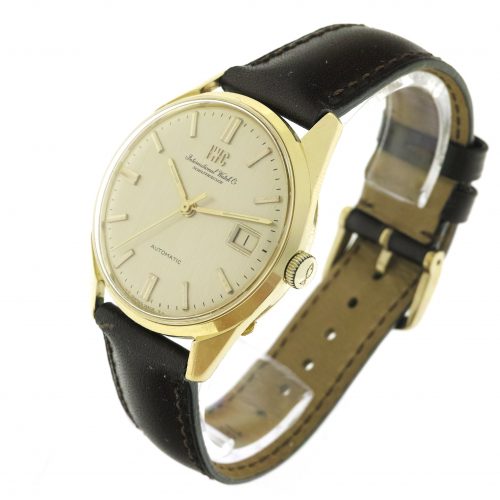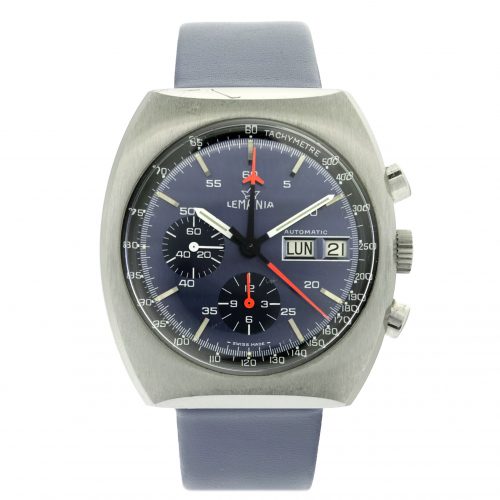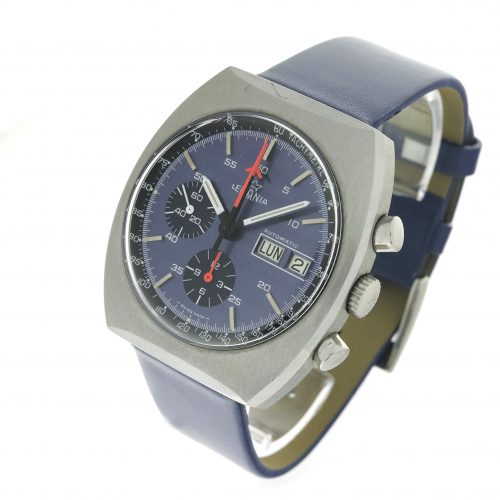Extremely rare and historically important OMEGA 30GD (Grande moyenne Décentrée) Observatory Competition chronometer, SN: 13648599 in its original testing housing No.12, made circa 1950s exclusively for trials. That particular piece scored 4 years successful participation at the observatory competitions in Geneva & Neuchâtel. The calibre 30 GD was the most precise wristwatch movement ever tested and continued to make its mark until 1967, the last year of the competitions.
The present watch have been adjusted by Joseph Ory, one of the two régleurs working at Omega at the time. It was first tested in 1955 and had a final result of 8.9 for which it won “2em Prix”. It was subsequently tested in 1960, next year in 1961 with great result 4.8 points, for which it won “1er Prix” in Neuchâtel Observatory and finally in 1963 in Geneva. Comes with “République et Canton de Neuchâtel Observatoire Astronomique et Chronometrique Bulletin de Marche” dated 31st March 1961 and a copy of its results from Geneva observatory testing in 1960.
The present watch was one of the most accurate observatory-tested wristwatch movements of the 1960s, part of a small group of Omega movements designed specifically for observatory contests. Omega 30DP chronometers are quite rare, Omega 30GD are practically impossible to find, but Omega 30GD from the 1st series is the Holy Grail. This particular movement is a very special 30GD, equipped with the largest ever Guillaume balance known in a traditionally constructed round chronometer wristwatch movements. It was a part of the first! GD series (only 3 of 10 made are known with such huge Guillaume balance) adjusted to 21,600 frequency due to the crazy large balance (30% larger than 30DP). In contrast 30GD movements from the 2nd series with a smaller balance (as small as 30 DP) were converted to 25,200. Just for reference, in 2017 Christie’s auction house sold 2nd series 30GD with smaller balance for CHF 30K+ : https://www.christies.com/en/lot/lot-6067311
This is the contest version of the famous calibre 30 mm. designed by Henri Kneuss and launched in 1939. These observatory calibre 30 GD movements are of special construction, named after the Grande moyenne Décentrée or off-centred center wheel which allowed it to receive a larger and thicker barrel, it features a huge Guillaume balance and an increased frequency of 21,600 vibrations per hour (2nd series with smaller Guillaume balance frequency of 25,200 vibrations per hour) instead of the usual 18,000 vph. The diameter of the wheels is smaller, as is the lever, the escape wheel is lowered to let the balance pass over it. These along with other modifications such as only using the best part of the mainspring, gave the calibre a more stable rate. See: Omega – A Journey Through Time, Marco Richon, 2007, pp. 194-195.
C. circular outer case, all set within an aluminium observatory testing box. D. White enamel dial, Breguet numerals, subsidiary seconds, steel blued hands. M. Omega Cal. 30mm GD nickel-finished, 20 jewels lever movement, large Guillaume balance with gold poising screws, oversized barrel, 21,600 A/h.
Up until 1967, the exact length of a second was determined by the Earth’s motion around the sun, and the Neuchatel observatory’s precise optics allowed the fine measurements necessary for precise timesetting to be made. Because of this, Neuchatel began to host observatory chronometer trials – a series of the most stringent, thorough accuracy tests in the history of mechanical watchmaking. The trials, held over a period of forty-five days, encompassed ten separate movement timekeeping tests in five different positions and two temperatures. These observatory trials quickly outgrew their roots as a simple certification test, and before long the trials at Neuchatel were a competitive battleground for the finest watchmakers in Europe. Names like Longines, Zenith, Peseux, Omega and many more traded records for decades, fighting to produce the most accurate movement possible. These movements were never intended for regular use, and bore little to no resemblance to what these companies offered their consumers. Along with the technical prowess of the watchmakers building the movements, in the “racing team” there were specialists, the “regleurs de precision”, who worked tweaking a number of movements until they could find a few of them to bring to the Observatory Competitions. By means of fine adjustments, replacement of key parts, use of special lubricants, they could create a few movements for the Competitions. And often they were the same movements for many years.
Watch is in overall very great condition (8/10), running and ready to use!





